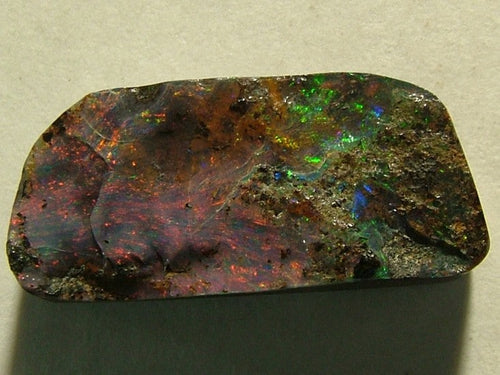Located in the north of South Australia, Coober Pedy is a town of not more than a few thousands inhabitants and the owner of a high-sounding title – the opal capital of the world! But, when you learn about its history and importance its more than 70 opal fields have in the market, you’ll have to admit that this town deserves its somewhat pretentious name.
Although the Aboriginal people have lived for thousands of years in this area, the Coober Pedy’s real life began in the dawn of the 20th century when an unsuccessful gold prospector Jim Hutchison and his son found small pieces of opal on the surrounding ground. The rest belongs to history. From that time on, thousands of people have been trying their luck here, in the hot Australian land. The influx of people seeking for the fast money was so great that Australian government had to limit the mining claims to 165-square-foot (15.3 m2) per prospector. However, that fact didn’t discourage the mining professionals and amateurs from all over the world. Some came all the way from Greece and the USA determined to spend their lives underground in search for opals. When I say underground I don’t mean spending time below just for work. Living in Coober Pedy means living beneath the surface. High temperatures and low humidity, especially during the summer months, made residents to move their homes to “dugouts” – the artificial caves bored into the hill sides, where life is more comfortable. Originally, the dugout homes were made by hand in the abandoned mine shafts, but today opal mining is not allowed here anymore, not in the town itself. However, house digging is still the best option if you want to avoid dry desert climate and immense heat fluctuations. Besides the homes, in Coober Pedy there are underground churches, hostels, even a campsite. Residents of this small town really know how to attract tourists. When it comes to opal mining, it had its ups and downs here in Coober Pedy. After major discoveries of opal back in 1920s, the area was almost deserted during the depression in 1930s, mostly due to poor results in the opal fields and unendurable living conditions. About a decade later, after an Aboriginal woman named Tottie Bryant dug out a large and valuable opal, the madness was back. Poor people mostly from Southern European countries came here to shoot the moon and lots of them stayed for good, so there are more than forty different nationalities working in the opal fields today. Some of them work regular hours, but a great majority prefers setting their own schedule. In the old times when opal was dug by hand, using only pick and shovel, the miners would listen for the opal. Indeed, scraping of tools on the soft sandstone sounds differently compared to harder opal. Of course, great part of the excavated material is potch, but from time to time some great specimens are found. And they are the reason why Coober Pedy deserves the title of the opal capital of the world. Read more.
You may like:
















